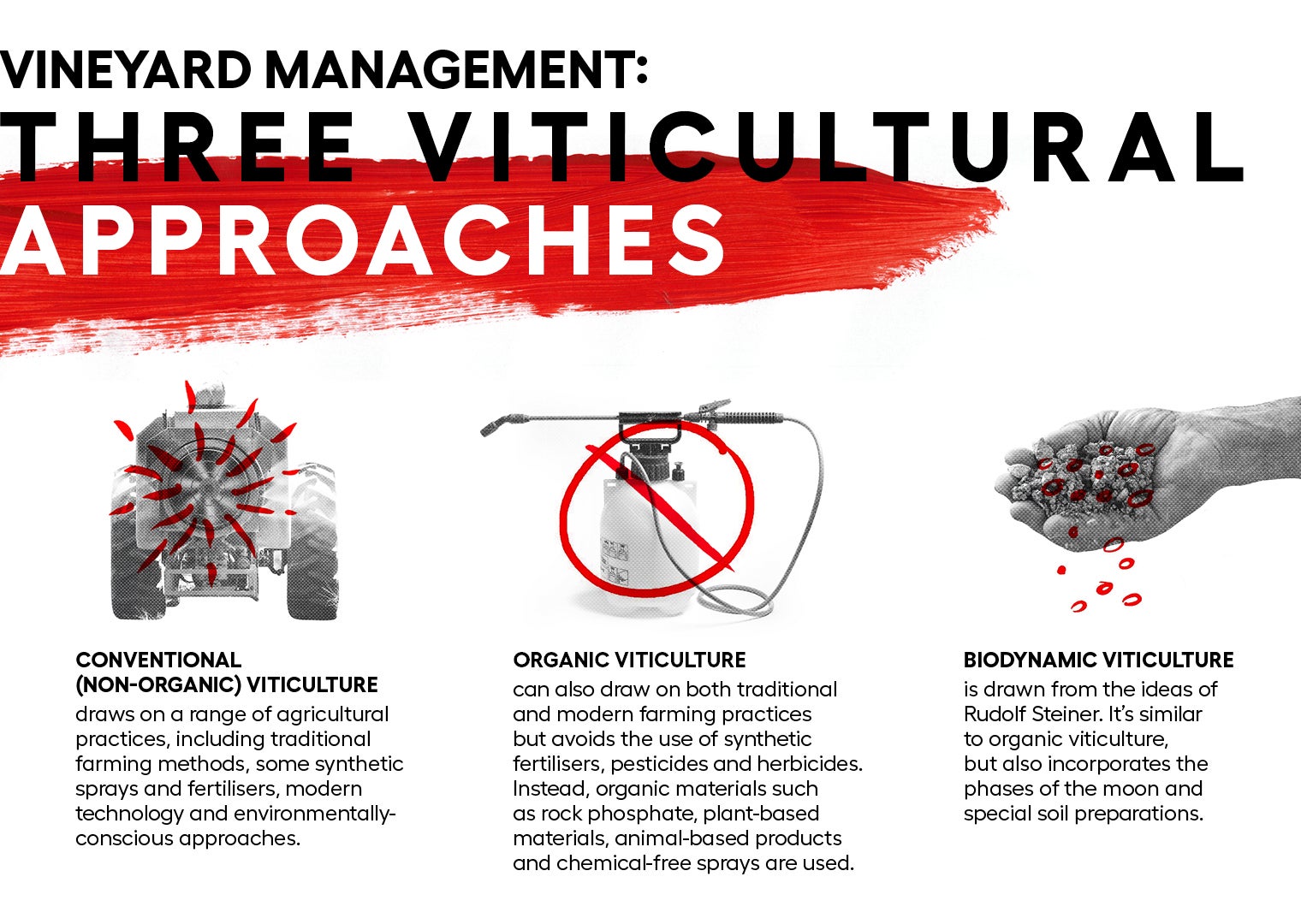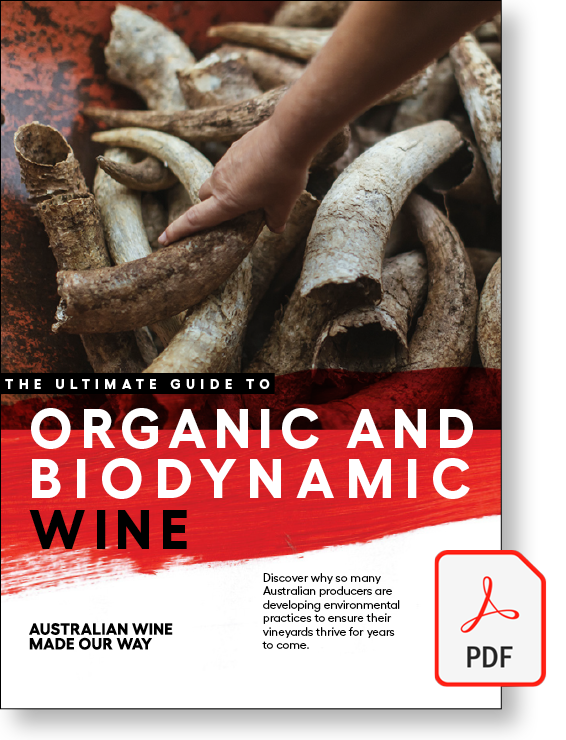Barossa Valley grapegrowers John and Lorraine Kalleske faced criticism and doubt when they converted their 150-year-old vineyard to biodynamics in the 90s. It became the first Barossa vineyard to be organic and biodynamic certified, although their family had farmed organically for many decades.
Today, John and Lorraine’s son Troy produces award-winning organic wines, and the pioneering family has seen a big jump in the number of people making and buying organic wines.
Australian organic and biodynamic wines are a niche but growing market, with exports growing by more than 50% from 2016 to 2019. As people become more interested in where their food comes from, they also increasingly want to know how their wines are made. But with various buzzwords flying around – organic, biodynamic, vegan, preservative-free – it can be hard to know what’s what. Here’s a simple guide.

Organic wine
There are broadly three ways you can grow grapes and make wine: conventional, organic and biodynamic – or a combination of these. In Australia, organic wines are made from grapes that have been grown organically – that is, without the use of synthetic fertilisers, herbicides, insecticides or fungicides. It’s an environmentally friendly way of producing grapes that’s all about keeping a natural balance in the vineyard and the surrounding area.
“I think it is so much more beneficial for the environment, the soil and the people working in that environment,” says Troy, an award-winning winemaker and seventh-generation Barossan. “And I think it’s also better for the people consuming that product, by not having any chemical residues in the wine.”
Not all wines made organically are certified organic. Certification requires that the whole winemaking process – from growing the vines to bottling the wine – is organic. Getting certified takes years and involves a lot of hard work, as well as annual audits.
Organic wine isn’t ‘natural’ wine: This is an unofficial term that typically refers to low-intervention wine made using traditional processes and few or no additives. Many of these wines are organic but not all.
Organic wine isn’t necessarily vegan: Winemakers commonly use fining agents to refine and stabilise wine, and these can be made from milk protein, egg whites, gelatin or fish (but only trace amounts remain in the final product). Vegan wines are not fined or they use earth-based agents such as bentonite clay.
Organic doesn’t automatically mean preservative-free: Under Australian certification, organic wines can contain preservatives but the limit is about half of what can be used in conventional wines. The most common preservative is sulphur dioxide (usually labelled as ‘preservative 220’), which is created naturally during fermentation, but some winemakers add extra to preserve wine quality.
Biodynamic wine
Biodynamics goes a step further than organics, and is all about nurturing the soil and treating the vineyard as one big living organism. It’s based on the ideas of scientist and philosopher Rudolf Steiner and follows the lunar cycle, which guides the timing of things like pruning and harvesting. Biodynamic producers also use ‘preparations’ made from manure, fermented herbs and minerals. Studies show that biodynamic soils are the most diverse in microflora and fauna.
Biodynamic viticulture has become much more common in Australia in the past few decades, although only a small proportion of vineyards are farmed in this way.
At Gemtree Wines in South Australia’s McLaren Vale wine region, third-generation viticulturist Melissa Brown converted her vineyard to organics when she took it over from her father more than a decade ago. She then delved into biodynamics, using sheep instead of weed-killing chemicals, making fertiliser in cow horns, and planting and harvesting according to the moon.
“I really care about the environment,” says Melissa. “To me, it’s just common sense when I’m growing a product that the more naturally I can do it, the better the result I’m going to get.
“When I was at uni back in the late 90s, organic wine was frowned upon. The quality generally was not very good. And I don’t think there was any biodynamic wine around. But the quality now is just as good, if not better, than conventional wines. So it’s been great to watch that progression and be part of the journey.”
Troy is also a big fan of biodynamics, and believes it results in unique wines that reflect the time and place they’re grown.
“When you buy organic and biodynamic wine, you’re buying honest and authentic wine,” says Troy. “You know you’re buying a wine that’s looked after the environment.”
For more information on Sustainable winegrowing Australia, visit the website.






